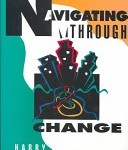I really enjoyed reading Peter Taylor’s (The Lazy Project Manager) blog about our services and particularly like his reference to CVs being like a game of Jenga towards the end of the game. This is a fantastic analogy and is so true of CVs being sent to me for review.
For those unaware of the game, basically it starts off as a tower of wooden bricks each layer placed across the next in opposite directions – the aim of the game is to take bricks out from the lower layers and add to the top of the pile without knocking the tower over. So as the game progresses the tower becomes unstable on the lower levels as gaps appear, the higher levels become top heavy with bricks which leads to eventual demise of the tower.

How very perceptive of Peter to describe a CV like this – as we work through assignments and change jobs we often add in detail to the CV but begin to lose consistency, we leave gaps further down the page, add in more and more detail working towards the top leaving the CV unbalanced and often lacking relevant information.
It is always good practice to revisit your CV on occasion regardless of whether you are thinking of making a career move or not – as it only became too apparent for a recent client of mine who had treated his CV like a game of Jenga then found himself made redundant. When I reviewed his CV it looked disjointed and in need of a great deal of work, he had made attempts to rework it but in doing so had managed to make it look very disjointed. When we talked through his feedback I teased out a number of interesting areas of work which he had failed to address in the CV and it quickly became apparent that he needed a sounding board to talk through his experiences enabling him to really draw out the kind of content which would see his CV placed on the top of the pile with recruiters.
As he had left it so long before working on the CV, he had forgotten a great deal of information and regretted not keeping on top of it. Also he now had an immediate requirement to get his CV out to recruiters and apply for roles as he was out of work – adding significant pressure to his already stressful circumstances.
After offering up key advice to him, he decided to have a go at rewriting his CV himself due to financial constraints, however after attempting to do this over the weekend he came back to me on the Monday asking if I could provide the CV writing service proposed.
Although it was not an ideal situation for him financially he had concluded that an investment in his CV would yield a much greater response from employers than he was currently receiving. So we worked together to really get to the crux of his core skill base and draw out achievements which demonstrate his ability to go above and beyond the call of duty – really emphasising his value to organisations.
The lesson to be learned here is that you should always have an up to date CV – don’t leave it until you are pushed to have to do something!
photo credit: Herman Rhoids via photopin cc





